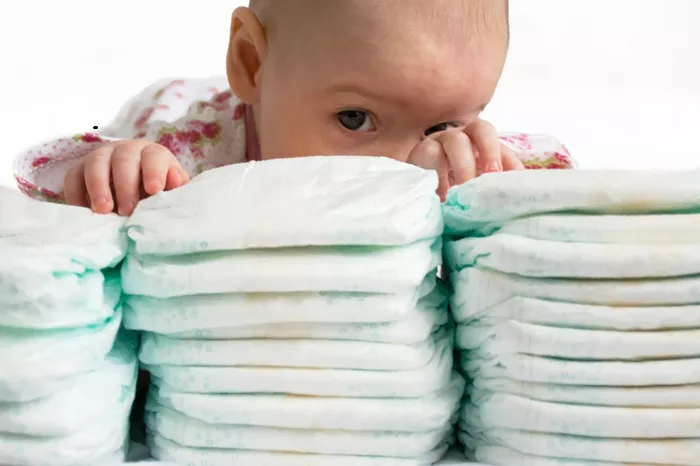When it comes to caring for a newborn, diaper changes are a significant part of the routine. New parents often wonder how many diaper changes each day for newborns. The answer varies based on several factors. This article will explore the recommended number of diaper changes, the reasons behind these recommendations, and tips for making diaper changing easier.
Understanding Newborn Needs
Newborns have unique needs. They cannot communicate their discomfort. Instead, they rely on their caregivers. A clean diaper helps keep the baby comfortable. It also prevents diaper rash and other skin issues. Understanding the signs that a diaper needs changing is essential. Newborns typically require frequent changes.
Recommended Diaper Changes
On average, a newborn will need about 10 to 12 diaper changes a day. This number can vary based on individual circumstances. Some babies may need more changes. Others might need fewer. Several factors can influence this.
Factors Influencing Diaper Changes
Feeding Schedule
Newborns eat frequently, often every 2 to 3 hours. Each feeding can lead to a wet or soiled diaper. Breastfed babies tend to have more frequent bowel movements than formula-fed babies. This means they might need more diaper changes.
Hydration Levels
Hydration is key. The more fluids a baby takes in, the more they will need to urinate. Newborns usually produce a steady amount of urine. If a baby is not getting enough milk, they may not produce enough wet diapers. Parents should monitor this.
Individual Differences
Every baby is unique. Some may be more sensitive to wetness. Others may have different bowel movement patterns. Understanding your baby’s habits is crucial. Keep track of how often they wet or soil their diapers.
Signs a Diaper Needs Changing
Parents should look for specific signs that indicate a diaper change is needed.
Odor
A strong odor is often the first sign. If the diaper smells unpleasant, it likely needs changing.
Bulging Diaper
A visibly swollen or bulging diaper is another clear indication. It shows that the diaper is full.
Fussiness
If a baby seems uncomfortable or fussy, it may be time for a change. Babies may not always cry, but restlessness can signal a wet or dirty diaper.
Skin Irritation
Parents should check for any redness or irritation around the diaper area. This can indicate that the diaper is wet or has been on too long.
Preventing Diaper Rash
One of the main reasons for frequent diaper changes is to prevent diaper rash. Diaper rash is a common issue among newborns. Keeping the diaper area clean and dry is crucial.
Use of Barrier Creams
Applying a barrier cream can help protect the skin. These creams create a protective layer. They reduce the risk of irritation from moisture.
Choosing the Right Diapers
Selecting the right type of diaper is also essential. Parents can choose between cloth and disposable diapers. Each type has its advantages. Parents should find what works best for their baby.
Diaper Changing Tips
Changing a diaper can sometimes be a challenge. Here are some tips to make the process smoother.
Prepare Ahead
Before starting a diaper change, gather all necessary supplies. This includes diapers, wipes, and any creams. Having everything on hand will make the process easier.
Choose a Comfortable Location
Find a comfortable place to change the baby. A changing table or a safe surface works well. Always keep one hand on the baby to ensure their safety.
Keep It Quick
Try to change the diaper as quickly as possible. Babies may not enjoy the process. A quick change can help minimize discomfort.
Talk to Your Baby
Engaging with your baby during the change can be comforting. Talk to them or sing a song. This can make the experience more enjoyable for both.
Monitoring Diaper Output
Tracking diaper changes can provide valuable information about a baby’s health. Parents should keep a log of how many wet and soiled diapers they change each day.
Wet Diapers
A newborn should have at least 6 to 8 wet diapers a day. This indicates they are getting enough milk. If a baby has fewer than this, parents should consult a pediatrician.
Soiled Diapers
Soiled diapers can vary widely. Breastfed babies may have several bowel movements each day. Formula-fed babies may have fewer. Both are normal as long as the output is consistent with the baby’s feeding habits.
Conclusion
In summary, newborns typically need about 10 to 12 diaper changes each day. This number can vary based on feeding habits, hydration levels, and individual differences. Parents should look for signs that indicate when a diaper needs changing. By being proactive, they can help prevent diaper rash and keep their baby comfortable.
Understanding the basics of diaper changing will help new parents feel more confident. With time and experience, they will find a routine that works for their family. Diaper changing is a simple but essential part of caring for a newborn. It plays a vital role in their comfort and health.
Related topics:


